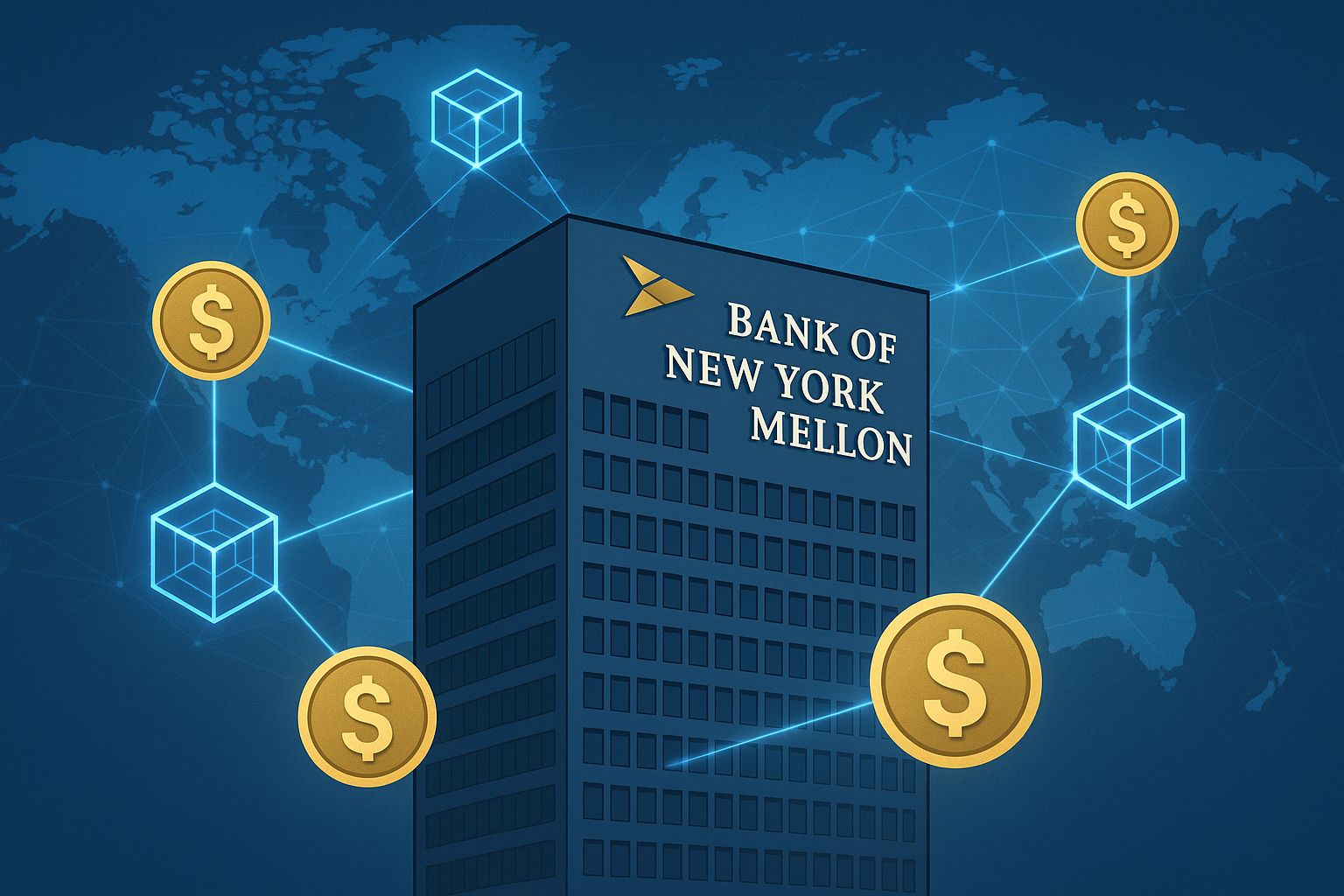
- BNY Mellon explores blockchain-based tokenized deposits to modernize payment infrastructure.
- JPMorgan and HSBC have launched tokenized deposit pilots for faster, cheaper cross-border transfers.
- Global banks embrace blockchain as new regulations boost confidence in digital asset innovation.
The Bank of New York Mellon Corp. (BNY Mellon) is exploring the use of tokenized deposits as part of its ongoing efforts to modernize its payments infrastructure.
The initiative aims to enable clients to make payments using blockchain technology, reflecting a broader shift among global financial institutions toward the adoption of digital asset frameworks.
According to Carl Slabicki, Executive Platform Owner for Treasury Services at BNY Mellon, the project aligns with the bank’s work to enhance real-time, instant, and cross-border payments.
Tokenized deposits, he said, could allow banks to “overcome legacy technology constraints,” streamlining the movement of deposits and payments both within their own ecosystems and, eventually, across the wider financial market as industry standards mature.
BNY Mellon’s treasury services business processes approximately $2.5 trillion in payments daily, underscoring the potential scale and impact of this innovation.
The bank views blockchain as a tool for making transactions faster, more efficient, and more secure — a vision shared by several leading players in the global banking sector.
Banks advance toward blockchain-based payments
Tokenized deposits are essentially digital representations of customer deposits, offering a claim against a commercial bank.
Unlike traditional transfers that may take days to settle, transactions using tokenized deposits are processed on blockchain rails, enabling instantaneous settlement.
Advocates say this model could lower costs and allow transactions to occur 24 hours a day, seven days a week.
BNY Mellon’s move follows similar experiments by other major institutions.
JPMorgan Chase & Co. launched a pilot program in June for its own token, JPMD, which represents US dollar deposits at the bank.
Meanwhile, HSBC Holdings Plc rolled out a tokenized deposit service in September, giving corporate clients the ability to transfer currencies across borders more efficiently and securely.
In Europe, the momentum has extended to collaborative efforts among banks.
A consortium of nine financial institutions — including UniCredit SpA, ING Groep NV, and DekaBank — announced plans to jointly develop a stablecoin, a blockchain-based token pegged to fiat currency and backed by liquid assets such as government securities.
Industry momentum and regulatory clarity
The banking industry’s renewed focus on blockchain comes amid increasing regulatory clarity around digital assets.
The United States recently introduced regulations for stablecoins, while the European Union’s Markets in Crypto-Assets (MiCA) framework is now being implemented.
These developments are providing traditional financial institutions with greater confidence to experiment with blockchain-based payment solutions.
BNY Mellon, one of the world’s largest custodians with $55.8 trillion in assets under custody or administration, has been a consistent participant in blockchain initiatives.
In July, the bank announced a collaboration with Goldman Sachs Group Inc. to use blockchain to maintain ownership records of money market funds.
Additionally, BNY Mellon is among over 30 global financial institutions working with Swift to develop a blockchain-based shared ledger for real-time cross-border payments.
The exploration of tokenized deposits represents another step in BNY Mellon’s broader digital transformation strategy.
As the financial system continues its gradual evolution toward tokenized and blockchain-enabled assets, BNY Mellon’s initiatives highlight how legacy institutions are adapting to a decentralized future — one where efficiency, transparency, and interoperability could redefine global finance.
